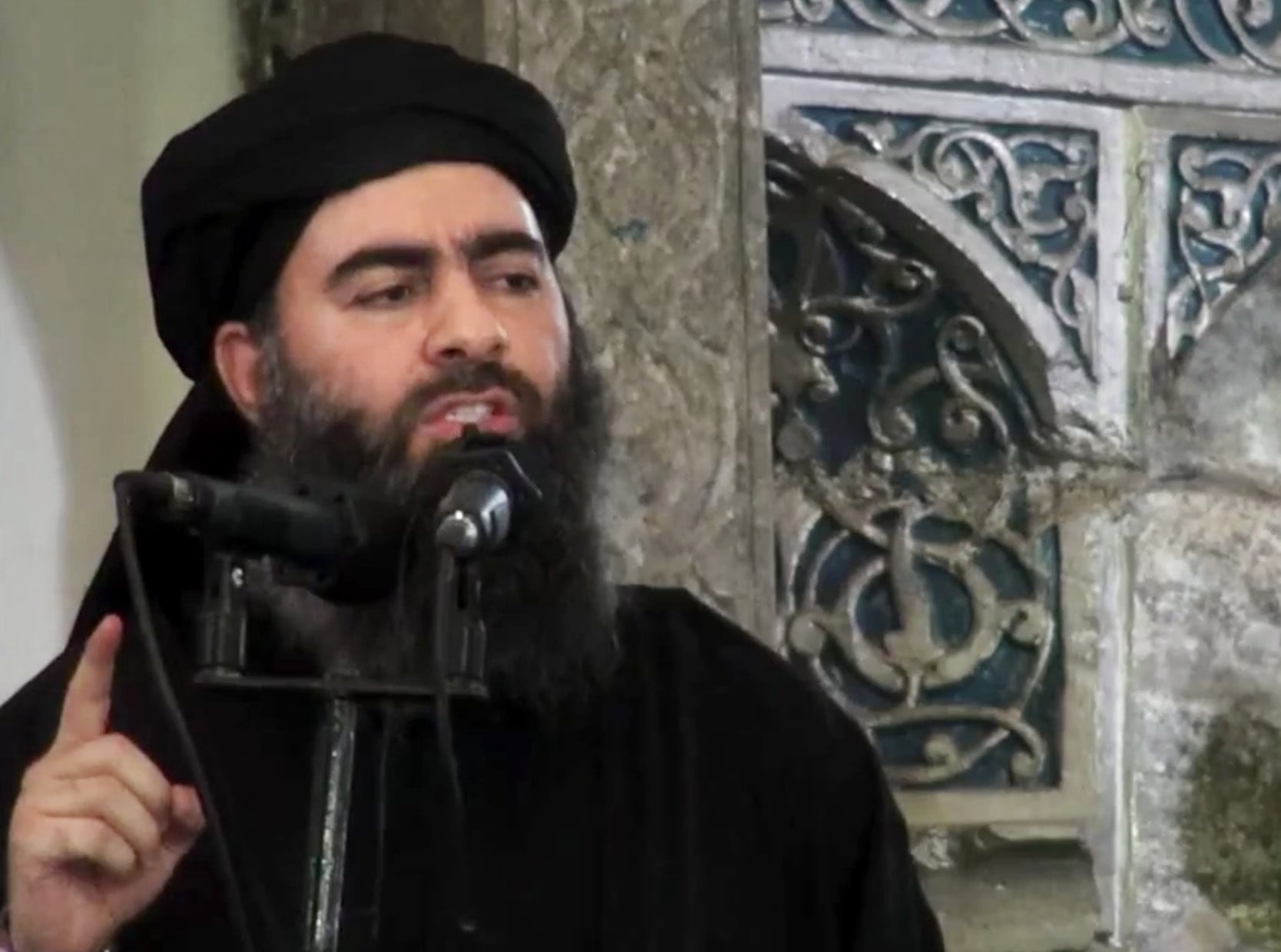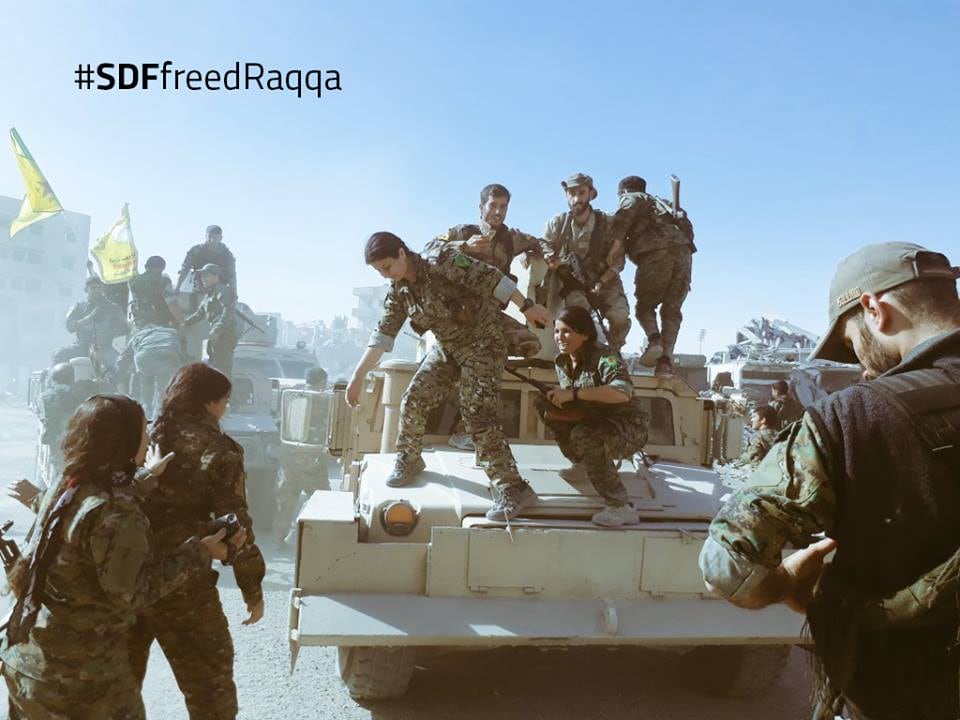BEIRUT — The Islamic State group has lost all the territory it once controlled in Iraq and Syria, but its shadowy leader and self-proclaimed “caliph” is still at large.
With a $25 million U.S. bounty on his head, Abu Bakr al-Baghdadi is the world’s most wanted man, responsible for steering his chillingly violent organization into mass slaughter of opponents and directing and inspiring terror attacks across continents and in the heart of Europe.
Despite numerous claims about his death in the past few years, al-Baghdadi's whereabouts remain a mystery. He appeared in public only once, in 2014. Since then, many of his top aides have been killed, mostly in U.S.-led coalition airstrikes.
He is among the few senior ISIS commanders still at large after two years of steady battlefield losses that saw the self-styled “caliphate” shrink from an area the size of Britain to a tiny speck in the Euphrates River valley.
Although largely seen as a symbolic figurehead of the global terror network — he was described as "irrelevant for a long time" by a coalition spokesman in 2017 — al-Baghdadi's capture would be a coveted prize for the various players across both Syria and Iraq.
But so far, he has eluded the Americans, Russians, Syrians, Iraqis and Kurds.
RELATED

In the last days of ISIS, as U.S.-backed Syrian Democratic Forces zoned in on the last slice of territory held by the militants in eastern Syria — a couple of villages and farmlands near the Iraqi border — the possibility remained that al-Baghdadi would turn up there. Several hundred ISIS leaders and hardcore fighters, many of them Iraqis, made a last stand in the enclave before surrendering.
The last pocket, in the eastern village of Baghouz, was declared liberated on Saturday after weeks of fighting. During the siege, civilians streamed out of the pocket and surrendered — estimated at more than 30,000, mostly family of ISIS. But there has been no sign of al-Baghdadi.
"The Coalition is not holding him nor do we know where he is," U.S.-led coalition spokesman Col. Sean Ryan told The Associated Press.
Mohammed Kheder, co-founder of the Sound and Picture group which documents ISIS, said the last time al-Baghdadi was spotted in the area was about 15 months ago, citing sources on the ground and the testimony of the people who left the area.
In Twitter posts, Kheder’s group has said it cannot rule out the possibility al-Baghdadi was detained long ago — “especially since many of American airdrops and night operations targeting ISIS leaders along the Iraqi border have not been disclosed by the coalition.”
Iraqi intelligence officials believe al-Baghdadi is hiding somewhere in the desert stretching across the Syrian-Iraqi border, using tunnels to move around.
"He does not use any communication equipment or internet to avoid detection by coalition planes," a senior intelligence official said. "When he wants to see someone from the organization, they are brought to him individually in cars that stop around two hours away from where al-Baghdadi is, and then they are brought to him individually on motorcycles."
Another official, a colonel, said the Americans recently targeted some of al-Baghdadi's closest people, including his personal bodyguard Khaled al-Saudi — known as Khallad — who was killed last week near the area of al-Baaj along the Iraqi-Syrian border.
Khallad's wife was arrested. Another close aide to al-Baghdadi was also recently killed and his wife captured, the colonel said, adding that the Americans believe such targets will soon lead them to al-Baghdadi. Both officials spoke on condition of anonymity to share intelligence information.
Al-Baghdadi was born Ibrahim Awwad Ibrahim Ali al-Badri al-Samarrai in 1971 in Samarra, Iraq, and adopted his nom de guerre early on. According to ISIS-affiliated websites, he was detained by U.S. forces in Iraq and sent to Bucca prison in February 2004 for his anti-U.S. militant activity.
He was released 10 months later, after which he joined the al-Qaida branch in Iraq of Abu Musab al-Zarqawi. He later assumed control of the group, known at the time as the Islamic State of Iraq.
After Syria's civil war erupted in 2011, al-Baghdadi dispatched comrades to the neighboring country to create a like-minded Sunni extremist group there. The group, which came to be known as the Nusra Front, initially welcomed moderate Sunni rebels who were part of the uprising against Syrian President Bashar Assad.
Over time, more of his fighters and possibly al-Baghdadi himself relocated to Syria, pursuing his plan to restore a medieval Islamic state, or caliphate. In April 2013, al-Baghdadi announced what amounted to a hostile takeover of the Nusra Front, saying he was merging it into a new group known as the Islamic State of Iraq and the Levant. Nusra Front's leader Abu Mohammad al-Golani refused to accept the takeover — as did al-Qaida's central leadership, which broke with al-Baghdadi.
Al-Baghdadi's fighters went onto to capture a contiguous stretch of territory across Iraq and Syria, including key cities such as Raqqa in Syria and Mosul in Iraq. In June 2014, the group announced its own state, or caliphate. Al-Baghdadi became the declared caliph of the newly renamed Islamic State group.
RELATED

The group ruled with a virulently extreme interpretation of Islamic law. The atrocities, massacres and beheadings by al-Baghdadi’s militants that followed — many broadcast in grisly and macabre video postings on militant websites — secured ISIS a spot in some of the darkest, most brutal annals of modern history.
Throughout it all, al-Baghdadi was in the shadows.
His only known public appearance on video was on June 29, 2014, when he appeared as a black-robed figure to deliver a sermon from the pulpit of Mosul's Great Mosque of al-Nuri in which he urged Muslims around the world to swear allegiance to the caliphate and obey him as its leader.
"It is a burden to accept this responsibility to be in charge of you," he says in the video. "I am not better than you or more virtuous than you. If you see me on the right path, help me. If you see me on the wrong path, advise me and halt me. And obey me as far as I obey God."
Little is known about al-Baghdadi's family. An ex-wife, Saja al-Dulaimi, and her daughter from al-Baghdadi, were detained in Lebanon in 2014. She was released a year later as part of a swap with al-Qaida in exchange for kidnapped Lebanese soldiers and policemen. In July 2018, IS announced that al-Baghdadi's son, Huthaifa al-Badri, had been killed fighting government forces in central Syria.
None of the subsequent reports of al-Baghdadi being killed or wounded were confirmed. In 2017, Russian officials said there was a "high probability" he had been killed in a Russian airstrike on the outskirts of Raqqa, but U.S. officials later said they believed he was still alive.
He resurfaced in late September 2017, calling in an audio message on followers to burn their enemies everywhere. Another audio was posted last August in which al-Baghdadi urges followers to “persevere” in fighting ISIS’ enemies — the speech was sprinkled with references to current events to show it was recent.
Experts tracking militant figures said the voice in the recordings was al-Baghdadi’s.
It was the last time he was heard of.
Associated Press writer Qassim Abdul-Zahra in Baghdad contributed to this report.





